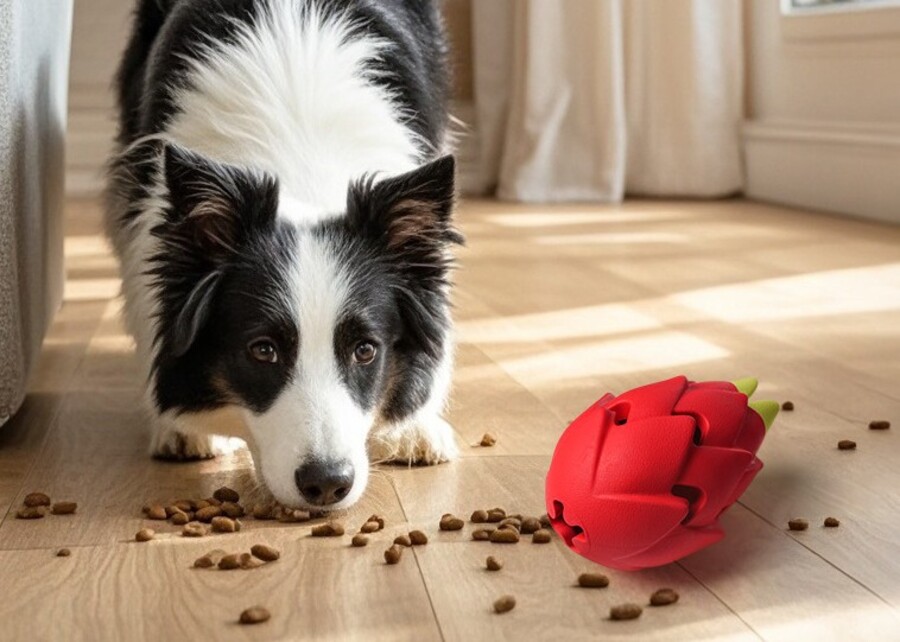Your brand wants a unique toy, but the manufacturing process seems complex. You worry about quality, safety, and finding a reliable partner. We can help you navigate this process easily.
The manufacturing of a custom dog treat dispenser toy involves several key stages: design and engineering, material selection, mold creation, mass production, quality control, and packaging. For OEM, you customize an existing design; for ODM, a new concept is developed from scratch with a manufacturing partner.
Welcome to our factory floor, virtually speaking. Over the past 10 years, I’ve helped countless brands turn simple ideas into best-selling pet products. Many business owners I speak with are full of great concepts but get stuck on the "how." They see manufacturing as a black box. My goal today is to open that box for you. I want to give you a clear, behind-the-scenes look at how these amazing toys are made. This guide will walk you through every step, showing you how to create a product that dogs love and customers trust. Let’s get started.
What Exactly is a Dog Treat Dispenser Toy?
You see them everywhere, but what makes them tick? It’s easy to think of them as simple containers. The truth is, the best ones are feats of clever engineering.
A dog treat dispenser toy is an interactive object designed to hold and release treats as a dog plays with it. It leverages principles of animal behavior to satisfy a dog’s natural foraging instincts, providing mental stimulation and preventing boredom.
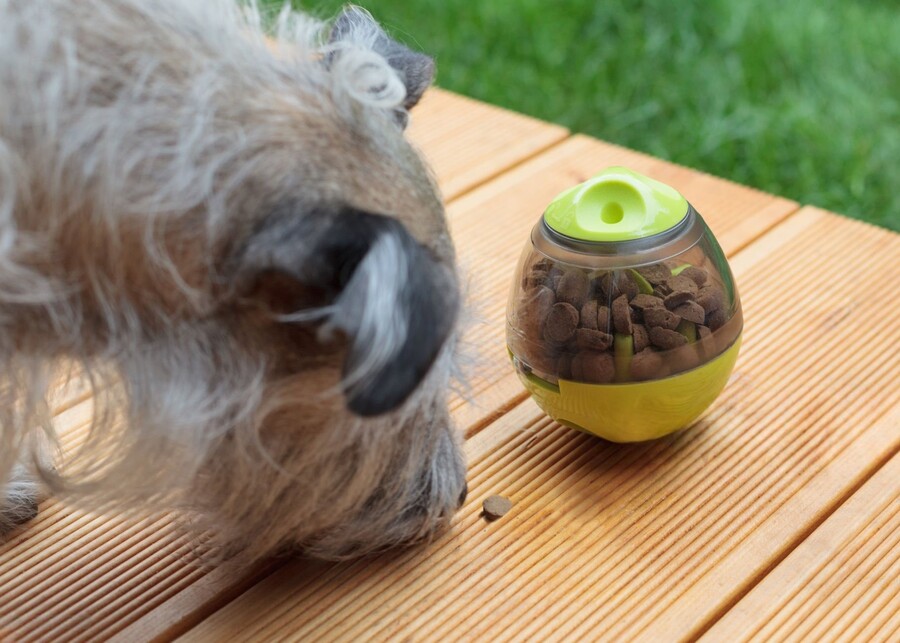
A Deeper Look: Engineering and Animal Behavior
When we design a treat dispenser, we’re not just making a toy. We’re thinking from two very important perspectives.
First, from an engineering and design perspective, we focus on creating a solvable challenge that rewards the dog’s effort. The material dictates the type of challenge. For toys made from materials like rubber, TPR, or plastic, this often means creating mechanical puzzles. We design internal mazes, adjustable openings, or weighted, wobbly bases that require the dog to manipulate the toy in a specific way to release the treats. For plush toys, the engineering is different but just as intentional. Here, we create challenges based on seeking and dexterity, designing hidden pockets, layered fabric flaps, or compartments that a dog must sniff out and open. The goal is always the same: balance the difficulty with the reward to prevent boredom or frustration.
Second, from an animal behavior perspective, we tap into a dog’s most basic instincts. Wild canids spend hours foraging for food. Our domestic dogs still have this drive. A treat dispenser, regardless of its material, mimics that natural "work-to-eat" process. This provides crucial mental stimulation, which studies show can reduce problem behaviors like chewing on furniture and separation anxiety. It turns mealtime from a 30-second gulp-fest into an enriching, brain-building activity.
Why Are These Toys a Must-Have for Pet Brands?
You know it’s a good product for dogs, but is it a good product for your business? You need products that don’t just sell, but also build your brand’s value.
These toys are a must-have because they offer high profit margins and build strong brand loyalty. They function as interactive products that deepen the emotional connection between a pet owner and your brand.
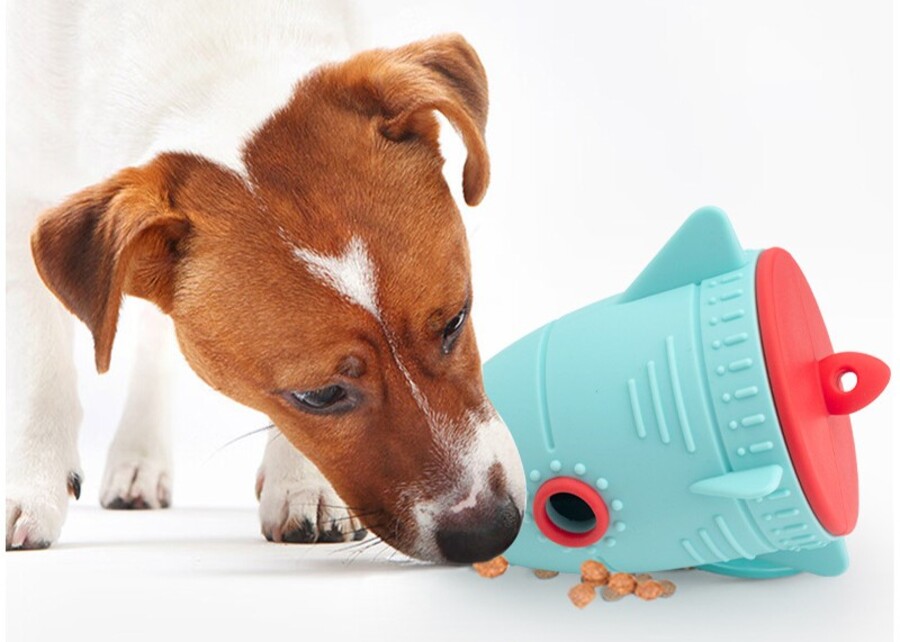
More Than a Toy, It’s a Business Strategy
Let’s talk about what matters most to you as a brand owner: profit and growth. Treat dispensing toys are a powerful tool for both.
First, let’s discuss profitability. These aren’t just simple toys; they are high-value-added products. You can position them as "enrichment tools" or "puzzle toys," which commands a higher price point than a standard chew toy. Even better, they create a perfect opportunity for bundling. You can sell the toy alongside your own line of high-margin pet treats. This simple strategy significantly increases the average transaction value for each customer. It’s a classic razor-and-blades model, adapted for the pet industry.
Next, think about brand building. A treat dispenser isn’t a toy a dog plays with once and forgets. It becomes part of a daily routine. Every time the owner fills the toy, they interact with your brand. Every time the dog happily plays with it, that positive emotion is associated with your brand. This creates a deep, emotional connection that a simple bag of food can’t replicate. Your brand becomes a trusted part of their pet’s happiness and well-being.
What Are the Main Types of Treat Dispensing Toys?
Your customers have different needs and budgets. Offering just one type of toy limits your market reach. You need a strategy to capture the entire market effectively.
The main types of treat dispensing toys can be categorized by their complexity and target market: simple, high-volume models for mass retail; complex puzzle toys for specialty stores; and ultra-durable options for premium brands targeting powerful chewers.
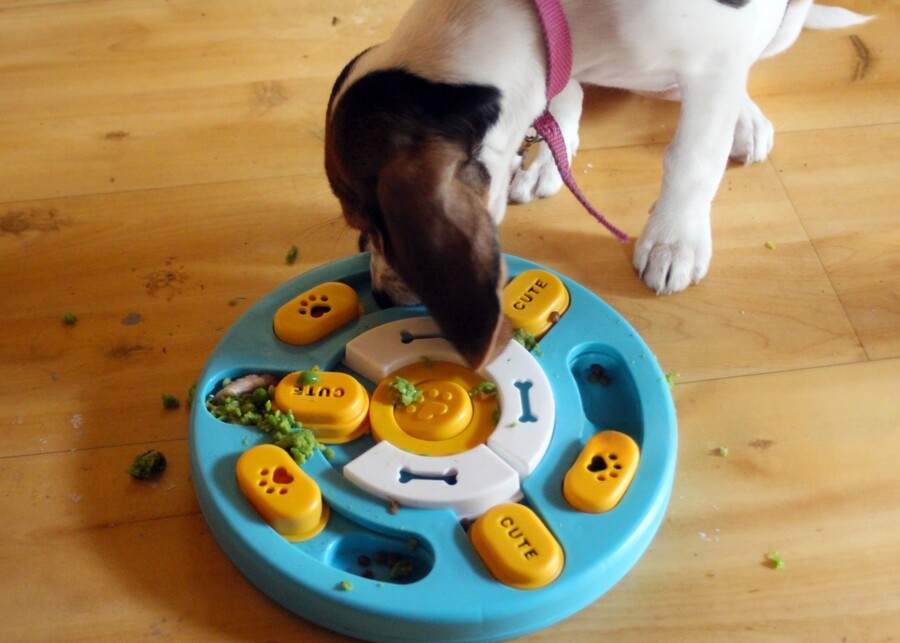
Building Your Product Line Strategically
Instead of just listing products, let’s think like a product line manager. We classify these toys based on business strategy to help you plan your offerings. This approach allows you to cater to different customer segments and retail channels.
1. Entry-Level / High-Volume
These are your workhorses. The designs are simple, often a basic ball or wobble shape with a fixed-size opening. They are made from cost-effective materials, making them perfect for mass-market retailers like supermarket chains. We recently worked with a large European retail chain that wanted to introduce an affordable pet enrichment line. We provided them with a simple, durable rubber ball dispenser that they could sell at a very competitive price point, leading to massive volume sales.
2. Mid-Range / Puzzle-Focused
This tier is for the discerning pet owner. These toys feature more complex internal mazes, adjustable difficulty levels, or multiple steps to solve. They are ideal for pet specialty stores and e-commerce brands that focus on canine enrichment. The materials are higher quality, and the designs are more innovative, justifying a higher price.
3. Premium / Ultra-Durable
This is the top of the line. These toys are engineered for the most powerful chewers, the "destroyer" dogs. They are made from the toughest, pet-safe materials available. The focus here is on extreme durability and safety, targeting brand owners who want to build a reputation for uncompromising quality and command a premium price.
What Makes a Great Treat Dispenser Toy Design?
You have a brilliant idea for a toy, but how do you ensure it becomes a successful product? A great concept needs to be translated into a functional, safe, and manufacturable reality.
A great treat dispenser toy design successfully balances four key elements: high playability to keep dogs engaged, absolute safety in materials and structure, lasting durability against chewing, and efficient manufacturability to ensure quality at scale.
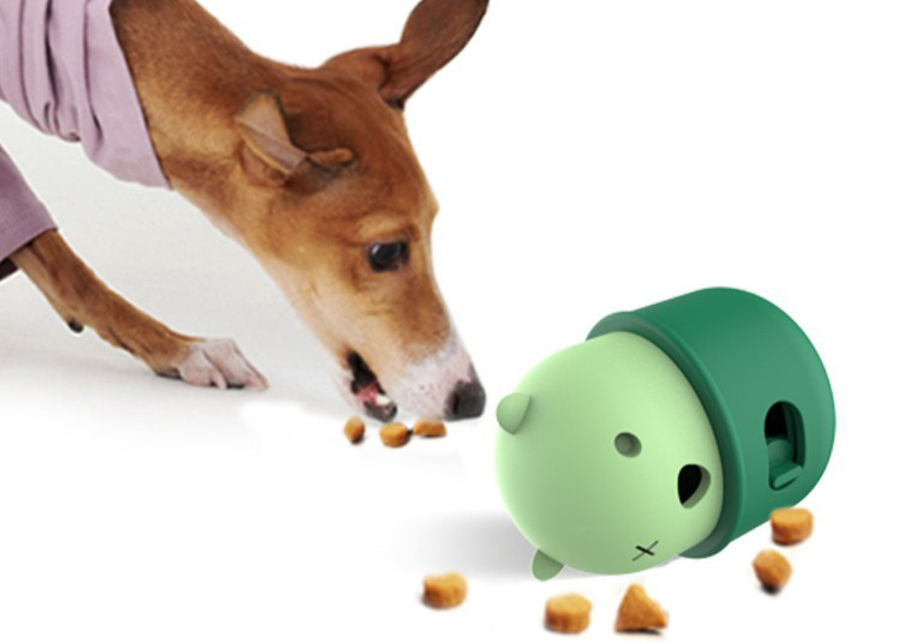
The Four Pillars of Successful ODM Design
When we partner with a brand on a new ODM project, we build the design on four essential pillars. Getting this balance right is the secret to a best-selling toy.
A client of ours, a successful lifestyle brand known for its uniquely shaped water bottles, wanted to enter the pet market. Their idea was to create a treat dispenser that mirrored their iconic bottle design. Here’s how we applied our four pillars:
- Playability: We couldn’t just make a hollow bottle. We designed an internal multi-fin baffle system. This created an unpredictable wobble and made treats dispense slowly, turning it into an engaging puzzle.
- Safety: The neck of their bottle design was a potential chew hazard. We widened it and used a flexible, non-toxic rubber that could withstand chewing without breaking into small, swallowable pieces.
- Durability: Their brand catered to active, outdoorsy people with medium-to-large dogs. We selected a high-density, tear-resistant natural rubber to ensure the toy could handle aggressive play and last for years.
- Manufacturability: The original design had undercuts that would have made it very expensive to produce. We worked with their team to slightly adjust the curves, maintaining the brand’s aesthetic while making the toy suitable for efficient injection molding. This kept the final cost on target.
The result was a unique, brand-aligned product that was fun, safe, durable, and commercially viable.
How to Choose the Right Material for Your Treat Toy?
Your customers trust you to provide safe products for their pets. Choosing the wrong material can lead to safety issues, bad reviews, and damage to your brand’s reputation.
To choose the right material, you must create a decision framework. Match the material’s properties—like safety, durability, and cost—to your brand’s positioning, target customer, and the specific design of the toy you want to create.
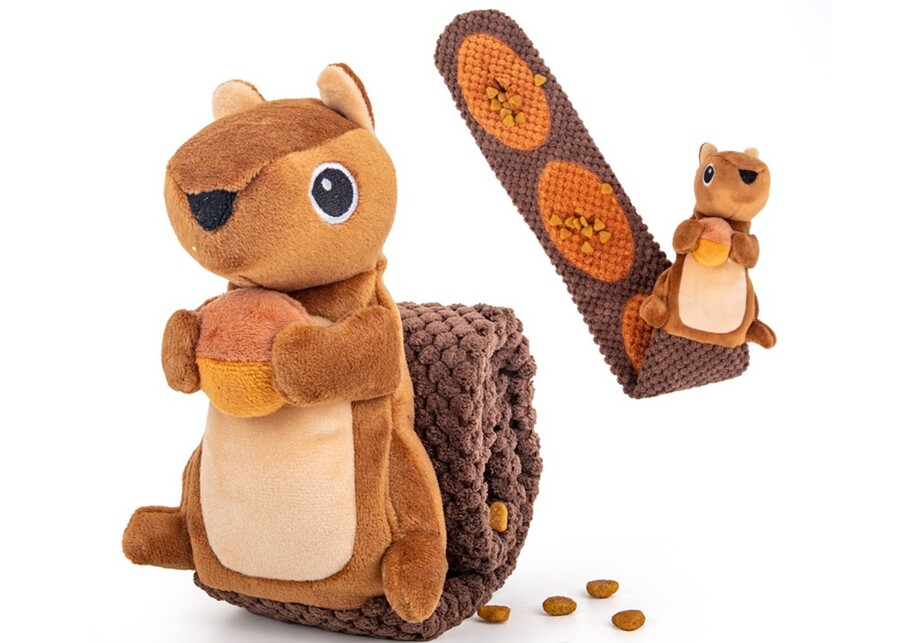
A Decision Framework for Materials
Don’t just pick a material; make an informed decision. Think about your brand and your customer first. Is your brand a budget-friendly option or a premium, high-end line? Is your target customer a Chihuahua owner or a German Shepherd owner? Answering these questions will guide your choice.
Here is a simple framework we use to help our clients decide.
| Decision Dimension | Natural Rubber | TPR (Thermo-Plastic-Rubber) | Silicone | Plastic (e.g., ABS) | Plush Fabric |
|---|---|---|---|---|---|
| Safety Grade | Excellent (Non-toxic) | Very Good (Non-toxic) | Excellent (Food-grade) | Good (BPA-free) | Good (Depends on fill/dyes) |
| Bite Resistance | High to Very High | Medium to High | Medium | Low to Medium (Can crack) | Low |
| Cost Range | Medium to High | Low to Medium | Medium to High | Low | Low to Medium |
| Best Use Case | Durable chew toys, balls, premium dispensers | "Softer" chew toys, puzzle components, floating toys | LickiMats, freezable toys, flexible puzzles | Hard shell puzzle toys, interactive feeders | Indoor puzzle toys for gentle dogs, snuffle mats |
| Brand Positioning | Premium, Durable, Eco-Friendly | All-Purpose, Value, Colorful | Premium, Hygienic, Food-Safe | Value, Interactive, Complex Puzzles | Comfort, Enrichment, Puppy |
Using this table, you can see the trade-offs. If you’re building a premium toy for power chewers, natural rubber is the obvious choice. For a hard-shell puzzle with intricate moving parts, a tough plastic like ABS is ideal. If you want a colorful, floating toy at a great price point, TPR is a fantastic option. For a premium, freezable toy that’s easy to clean, silicone is perfect. And for an indoor, snuffle-style toy for gentle dogs, plush fabric is the go-to. Your choice of material sends a clear message about your brand’s quality and values.
How Can You Customize Toys for Your Brand (OEM/ODM)?
You want to launch a product line, but you’re not sure where to start. You might need something fast, or you might want something completely unique. Understanding your options is key.
You can customize toys through two main paths. OEM (Original Equipment Manufacturer) is a fast track where you add your logo to our proven designs. ODM (Original Design Manufacturer) is a creative path where we co-create a brand-new toy from your unique concept.
Path A vs. Path B: Which is Right for You?
Choosing between OEM and ODM depends on your business goals, timeline, and budget. We offer both paths to provide maximum flexibility for our partners. Let’s look at them as two distinct journeys.
Path A: The OEM Fast Track
Think of this as the express lane to market. This path is perfect if you want to launch quickly and with minimal risk.
- How it works: You browse our extensive catalog of market-tested, successful treat dispenser designs. You choose the models that fit your brand, select your colors, and provide us with your logo.
- The benefit: It’s fast, cost-effective, and you’re launching with a product that already has a track record of success. We handle the technical side, and you can focus on marketing and sales. This is ideal for brands wanting to quickly expand their product range or test the market.
Path B: The ODM Brand Flagship
This is the path for visionaries who want to make a statement. This is for creating a product that is 100% yours.
- How it works: You come to us with an idea. It could be a simple sketch on a napkin, a 3D model, or just a concept. Our design and engineering teams work with you to turn that vision into a fully realized, manufacturable product.
- The benefit: It offers complete uniqueness and powerfully reinforces your brand identity1. This is how you build a "hero" product that no one else has, creating a strong competitive advantage and deep brand loyalty.
How to Build a Full Range of Treat Toys Efficiently?
Your brand is growing, and you want to offer a complete product line. But managing multiple suppliers for different toys, beds, and bowls sounds like a nightmare of communication and logistics.
You can build a full product range efficiently by partnering with a one-stop sourcing provider. This consolidates all your procurement into a single point of contact, saving you immense time, reducing shipping costs, and ensuring consistent quality across all categories.
The End of Multi-Supplier Headaches
Are you tired of juggling communications with five different factories for five different products? Are you worried about coordinating five separate shipments and five quality control checks? This complexity doesn’t just waste your time; it costs you money in fragmented shipping and administrative overhead.
This is a problem we solve every day. I remember working with a client from Canada, an e-commerce entrepreneur named Chloe. She was scaling up and wanted to sell a curated "puppy starter kit" that included a soft treat dispenser, a cozy bed, and a non-slip bowl. Sourcing these items individually was overwhelming her.
She came to us with her list. We leveraged our extensive supply chain to source all three items for her.
- Consolidation: We gathered the toys from our own factory and sourced the perfect bed and bowl from our trusted partners.
- Quality Control: Our team performed a rigorous quality check on every single item, ensuring they all met her high standards.
- Optimization: We then packed everything together intelligently, optimizing the carton arrangement to minimize wasted space.
This one-stop service saved Chloe dozens of hours in communication and coordination. More importantly, by consolidating everything into one shipment, we cut her freight costs by nearly 30%. She got her full product range efficiently, affordably, and with complete peace of mind.
How to Start Your Custom Toy Project with a Partner?
You’re ready to take the next step, but reaching out to a manufacturer can feel intimidating. You might worry you don’t have all the details figured out yet.
Starting your custom project is simple. The first step is to share your initial idea with us. It doesn’t need to be perfect. Our expert team will then provide a free, no-pressure initial evaluation and professional advice to guide you forward.
Your Great Project Starts with One Simple Step
Every successful product we’ve ever made started with a simple conversation. You don’t need a finalized technical drawing or a complete business plan to get started. All you need is an idea.
We’ve designed our process to be as easy and accessible as possible, because we believe in helping great ideas come to life. Forget about filling out complicated forms or feeling like you need to have all the answers.
Here is your first step, and it’s a simple one:
Send your idea to us. It can be a sketch, an inspiration photo, a list of features, or even just a question. Email it to my team.
What happens next? Our dedicated product experts will review your concept. Within 24 hours, we will get back to you with our initial thoughts, professional suggestions, and a preliminary assessment. This first consultation is completely free and without any obligation. Let’s build something great together.
Conclusion
From a simple idea to a finished product, creating a custom dog toy is a clear, manageable process. With the right partner, you can confidently build your brand and delight your customers.
-
Understanding brand identity can help you create products that resonate with your audience and build loyalty. ↩

